Comments from the Chair
Politics
1) Local elections
Elections for San Antonio City Council are in early voting now, with full election day Saturday May 6. Please check out our endorsements for local elections via our website TurnTexasGreen.org. Please help our candidates win, and please vote! We have a real chance to change San Antonio government to a more open, inclusive government that truly values our input and that of many other community groups seeking to improve our city, not just to profit from it.
2) Texas legislature
Environmental Lobby Day was held in Austin Tuesday April 25. People from around the state gathered to try to impress on our elected officials the importance we all place on a healthy environment, green space, renewable energy, clean air and water, improved transportation and smart growth.
You can follow bills of interest at Lone Star Chapter's Legislative Tracker. The following link gives access to information about current Texas legislation: TX Legislature Online: Bill Search. It is vital for your representatives to hear from you. Use the following to determine who represents you in the Texas House and Senate: Who Represents Me? Finally, you can track bills of interest, and receive email alerts whenever actions are taken, by setting up a list on MyTLO.
3) Washington
The EPA in its short time under Scott Pruitt has already moved to delay, and possibly cancel implementation of methane rules begun under President Obama. These rules would substantially reduce the large amount of methane gas that currently leaks (or is flared off from) O&G fields around the country, including our nearby Eagle Ford. We get significant air pollution from there, and these rules would have concrete benefits to our air quality, if they are ever implemented.
National haze and Clean Power Plan (/CPP) regulations are also under assault. The rules, if implemented, would greatly benefit the haze induced deteriorating views and air quality in Big Bend and Guadalupe National Parks. The CPP would remove substantial power plant pollution from air over Texas. Some of this pollution from coal power plants in NE Texas blows down into SA.
Mr. Pruitt also recently ruled against his own EPA scientists, approving the toxic pesticide chlorpyrifos for continued use on crops across our country. The list of environmental assaults lengthens almost by the day.
National Sierra Club elections
I don’t know results as I write this. My main hope is that sufficient members voted!! Otherwise SC governance is in jeopardy, and an expensive repeat vote might be required, wasting dollars needed to defend our environment.
Nuclear waste
The West Texas company seeking to receive “high level radioactive waste “ (HLRW) has asked the Nuclear Regulatory Commission to postpone action on its application. Dallas based Waste Control Specialists is a money losing operation, and they are seeking purchase from their one major competitor, Utah based Energy Solutions. That effort provoked anti-trust action from the Obama Administration, but it seems to me unlikely the Trump Administration will attempt to block this merger.
This delay is nevertheless welcome news for us to rally more opposition to this dumb idea of “interim” storage. What is needed is permanent storage, and this “interim” plan only kicks the can farther down the road for someone else to deal with it. In the mean time on site storage at nuclear power plants remains the safest and most cost effective measure.
Climate action
Our hopes for positive April action from SA City Council on developing a Climate Action Plan are defeated. Consideration of a Climate Action Plan was delayed at a April 19th meeting until next September. It appears that some on City Council did not want to risk conservative voter heat right before elections.
I think it is fair to conclude that — once again — Mayor Taylor takes responsibility for this step back from forward progress in our city. This is what happened with SA Tomorrow, and it has happened again. It is extremely disappointing, but we will continue to press for action on climate change. I strongly hope we get our endorsed candidates as Mayor and City Council members this month so we can get some progress again.
March for Science
On Earth Day close to 2000 people from across San Antonio gathered in San Pedro Park for a 2 mile morning March for Science. Remarkable but true, science needs to be defended.
Just look around and a huge part of our life today is the result of careful scientific research conducted by thousands of men and women around the globe over centuries. The scientific method is not perfect, but it surely is the best way we know to ask testable questions and find defensible, data driven answers. Soooo Sad, that the value of science is called into question almost daily now. Without vaccines, water sanitation, air quality efforts, restrictions on toxic chemicals in our food, air and water--where will we be?? A good article in the San Antonio Express News on April 23 points out the coming impacts of loss of funding for EPA work on clean water in the Rio Grande Valley.
April 29 there is no Climate March in San Antonio, regrettably, but many will be marching elsewhere around the world. We need policies driven by data and science, not ideology and opinion. Please speak out for science and health and healthy environments at every opportunity. Our world depends on it!
by Terry Burns, M.D., Alamo Group Chair
Build San Antonio Green Programs

This month, our General Meeting presentation is an overview of the Build San Antonio Green Suite of Programs designed to help Homeowners, Builders, and Developers to get ahead of the curve and build a more energy efficient and ultimately more connected building. The programs include: Single Family Homes, Multifamily, Mixed Use, Commercial Buildings, Bring Solar Home, Solar Concierge, and the Smart Green Building.
Tuesday, May 16th
6:30 p.m.
William R. Sinkin Eco Centro, 1802 North Main Avenue
Map
Anita Ledbetter is the visionary of Build San Antonio Green, she has been at the helm since 2006, shaping the program into the success that it is today. Anita combines sociological insight and almost 20 years in the construction industry to give her a unique perspective in building our program. Her passion for community service runs deep. She has served on numerous boards and committees, the Greater San Antonio Builder’s Association, the City of San Antonio’s Sustainable Building Code Task Force, Mission Verde Alliance, SA Tomorrow Committees, and San Antonio Bike Share.
Sierrans Active in Texas Legislature
Several members of the Alamo Group have been involved in this year's session of the state legislature. We have testified before various committees, written letters and participated in Alliance for a Clean Texas's Lobby Day. Read more about our activities below.
Bills threatening Edwards Aquifer going nowhere
Companion bills that would have undermined San Antonio's Edwards Aquifer Protection ordinance appear to have little chance of passage. These bills would have forced the City to buy conservation easements from developers who had to leave part of their land undeveloped as a result of impervious cover limits.
I testified in opposition at the House committee hearing, making the point that San Antonio taxpayers have already spent $325 million to purchase 143,245 acres of land and conservation easements to protect the aquifer. I commented that the bill would add another burden to taxpayers by forcing them to pay the very people who propose to contaminate our drinking water with high impervious cover development projects.
HB 1135 by Workman (R-Austin) was left pending in committee. SB 1385 by Campbell (R-New Braunfels) did not receive a hearing.
Legislature set to trim local tree ordinances
Builders and developers are about to achieve their long sought after goal; diminution of tree preservation ordinances across the state. SB 744, Lois Kolkhorst's "heritage tree destruction" bill, was passed by the Senate April 5th in a unanimous vote.
Its identical House companion bill, HB 2052, was approved last week by the House Committee on Urban Affairs and is headed to the floor for a vote as I write this. It is almost certain to pass and be signed into law.
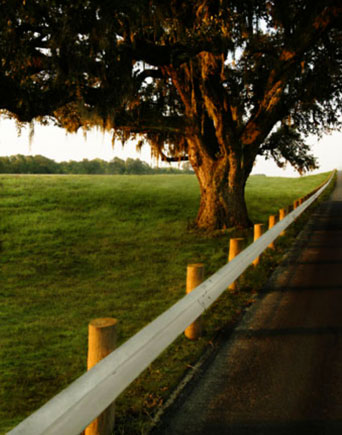
A deal is hatched
There was significant opposition at the Senate committee hearing, including testimony by 3 Alamo Group members. As a result, Senator Kolkhorst substantially changed the bill to cut back its negative impacts, even addressing objections made by the Sierra Club.
Subsequently, a deal was struck among major cities, the Texas Municipal League and the Texas Association of Builders (TAB). If the cities and TML would drop their opposition to the bill, TAB would agree to not move the "clearcutting" bills (see The clearcutting bills section below).
This deal has held, as Austin and San Antonio testified for the bill at the Urban Affairs committee meeting, and the "clearcutting" bills appear to be dead this session.
What the legislation does
This legislation, which was written by TAB, will reduce the amount of mitigation developers must provide to compensate for excessive tree removal. When builders/developers destroy more than the allowable percentage of trees on a development site, they are required to mitigate that excessive destruction by planting new, smaller, trees or by paying fees into a city tree planting fund.
This bill decreases mitigation fees and/or trees planted by 1/3. To qualify for this reduction, developers must plant 2" minimum caliper trees and maintain them. SB 744's effect will be to diminishes protection of existing trees, especially large "heritage" trees, and increase bulldozing of these trees for big box parking lots and mass-produced housing. Approximately 77 local tree ordinances across the state will be impacted.
In addition, the bill will create a new section in the Texas statutes establishing State regulation of municipal tree preservation ordinances. This is potentially the most damaging result, because TAB and other pro-development groups will return to the Legislature every 2 years with amendments to further enable tree removal from development sites.
ACT Lobby Day

Meredith McGuire, Gay Wright, Terry Burns and I participated in Alliance for a Clean Texas's Lobby Day on April 25th. We visited with State Representatives and legislative aides primarily representing the San Antonio area.
We advocated for and against bills dealing with a variety of issues: wind farm regulations, air quality permit hearings, discharge of sewage effluent over aquifers, TERP funding and lead testing.
The clearcutting bills
These bills enable mass clearcutting of trees (even giant heritage oaks). They appear to be dead this session because none has even been scheduled for a committee hearing. I include them in this story only for reference.
- SB 782 by Donna Campbell (R-New Braunfels) & companion HB 2535 by Bill Zedler (R-Arlington)
- SB 898 by Paul Bettencourt (R-Houston)
- SB 1082 by Konni Burton (R-Fort Worth)
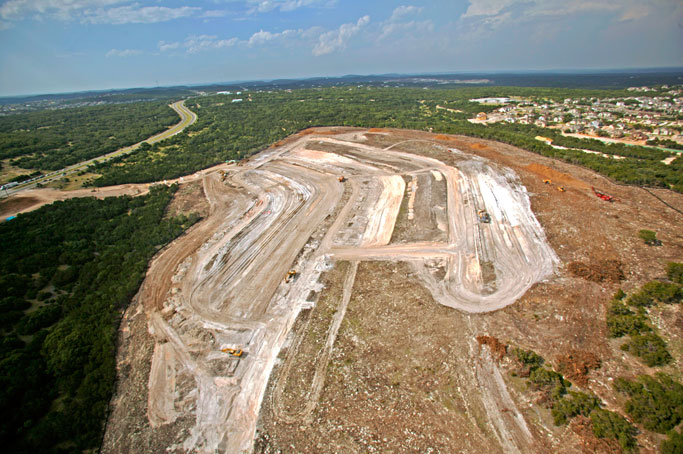
by Richard Alles, Forests/Trees contact, March 30, 2017
Adventures in China & Mongolia
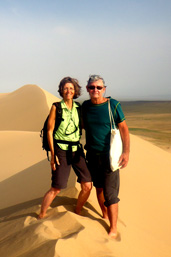
Again this month, our Lions Field event features Sierrans Alan Montemayor and Cheryl Hamilton. They will describe their 6-week trip to China and Mongolia with an emphasis on the rapid changes and challenges facing the peoples of these countries.
Thursday, May 25th
6:30 p.m.
Lions Field Adult Center, 2809 Broadway @ Mulberry
Use VIA bus route 9 or 10
Map
Since just a few of us were able to attend their April presentation, as it was Fiesta, and as some of us were phoning for candidates, Alan and Cheryl agreed to repeat their program There were so many things of interest to learn about and the images were terrific. See China's large national park, learn how they traveled about the countries, learn about the lifestyle and friendliness of Mongolians and Chinese people they met, housing in both countries, markets and shopping, the bullet train, and much more.
Alan Montemayor and Cheryl Hamilton are retired and love to travel to remote and interesting places, including all 7 continents and 57 countries so far. They travel mostly independently, using guided tours only where necessary to gain access to interesting areas.
Cheryl is a consummate internet travel agent and has booked itineraries of up to 3 months, finding the best deals in transportation, lodging, food and adventure experiences. Typical travel for Alan and Cheryl involves a complex mix of airplanes, buses, trains, subways, rental cars, bicycles, ferries, hiking, hotels, hostels, campsites, local food markets and grocery stores.
They visit some of the larger cities, but prefer to explore the countryside the majority of the time. Alan and Cheryl travel in a perpetual learning mode, examining the ecology, energy consumption, history, food and culture of many different areas. This event is free and open to the public.
Bit of the Best in Southeastern Utah: Canyonlands National Park, Needles District
Canyonlands is the largest national park (National Park Service) in Utah at 338,000 acres, though Grand Staircase-Escalante and Bears Ears national monuments are much larger (Bureau of Land Management and US Forest Service). There are three districts in Canyonlands: Island In the Sky, Maze and Needles.
Island In the Sky, the largest and on the north side, is the most popular and close to Moab and Arches National Park. I would love to spend a week in Maze but access is serious 4WD and its a long hike in. Needles is to the southeast. The park is divided into these districts by the Colorado and Green rivers, the confluence of which is just south of the center of the park; look at the park map. Here's the page at Wikipedia.
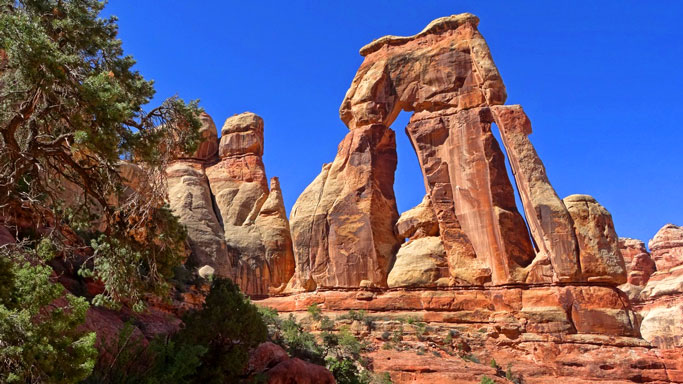
Visiting
The vistas in Needles are astounding if you like endless sandstone pinnacles, buttes and canyons to the horizon. Needles is accessible via Utah Hwy 211 from Monticello to the east. There's a pic from this road in an article on Bears Ears National Monument in the March 2017 issue of this newsletter. Canyonlands is just north of Bears Ears.
There are several key trailheads: at Squaw Flat campground, Elephant Hill, and Big Spring Canyon Overlook. From there begin great loop routes on good trails with limited change in elevation. Best to plan carefully and have a compass, printed map and GPS app on your phone, as there are many trail junctions that can be confusing. Here's the NPS Needles trails webpage. Look at the map image below which you can correlate with the park map.
The entire Moab area is extremely popular for all kinds of outdoors activities during peak seasons. I happened to be visiting here one Spring break; the campgrounds off Hwy 128 were really busy (see below) and there was a bit of a traffic jam at a supermarket. Best to plan ahead and arrive at campgrounds early.
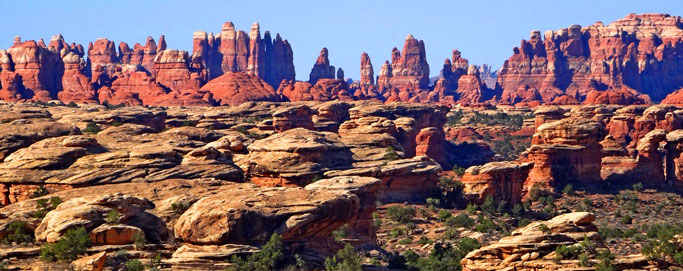
Camping specifics
The Squaw Flat campground in Needles is usually full by noon; there are reservations peak seasons for one of the two loops. The sunset views from the top of the butte right next to the sites are great. There are two BLM campgrounds just north of Hwy 211 on the way into Needles, about 20 mi from Monticello. Driving in you would first see Creek Pasture group site; if you are late and it is empty presumably you can use it. Hamburger Rock campground is next, just north on Lockhart Road. Both are primitive camping with no water.
The campground at Island in the Sky District is small, no reservations, and no water. But there is a big BLM campground off Hwy 313 driving in from Moab. And there are various places on this BLM land to simply pull off 313 and camp, but we should only use established spots to reduce environmental impact. And 23 miles south on 313 is the turnoff for Dead Horse Point State Park, a destination of its own, which has reservable campsites.
The campground in Arches National Park is reservations only and usually full months ahead. There are campgrounds on the south side of the Colorado River east of Moab off Hwy 128; I Googled "campgrounds hwy 128 Moab" which produced a nice map showing Goose Island and Grandstaff campgrounds and others. There are campgrounds in Manti-La Sal National Forest south of Moab; if you drive the 60 mi La Sal Loop Scenic Drive (quite scenic indeed) you will pass a number of these. But as in all national forests campgrounds may be closed low seasons and even if open the water system may be turned off if there is no campground host. Best to call the office to check, and always carry some gallons of water in any case.
Recreation.gov has info about most campgrounds on federal lands and info about other reservable activities. This is where you can reserve campsites if that is possible for particular campgrounds. Once you get names of campgrounds in a particular area you can Google for further info; there are many websites that may have additional detail for RVers and people interested in various activities.
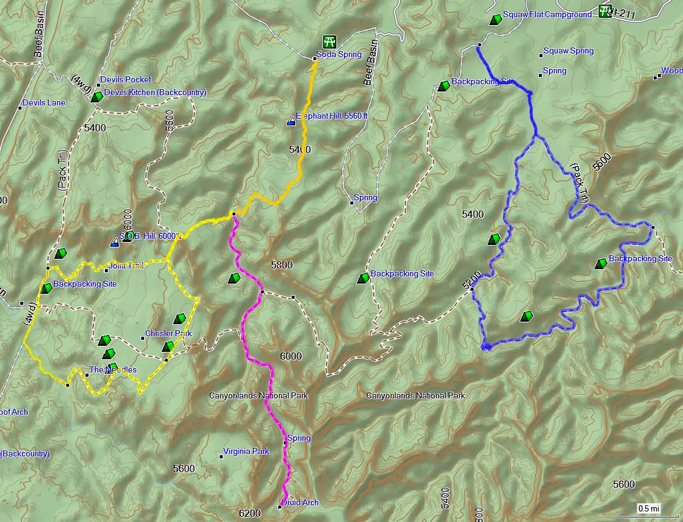
Why is this whole area so incredibly spectacular?
Why all these layered colorful sandstone formations? What are their names? What happened? Why specifically here? How old is this stuff? Why hasn't it all eroded into sand dunes?
There are lots of webpages talking about the geology of this big area. Here's the park's page, a Wikipedia page and another NPS page. And check out the greater Colorado Plateau, which includes the southeastern half of Utah, nearly half of Arizona and parts of Colorado and New Mexico.
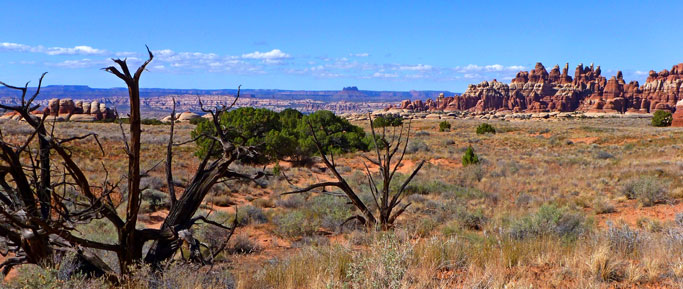
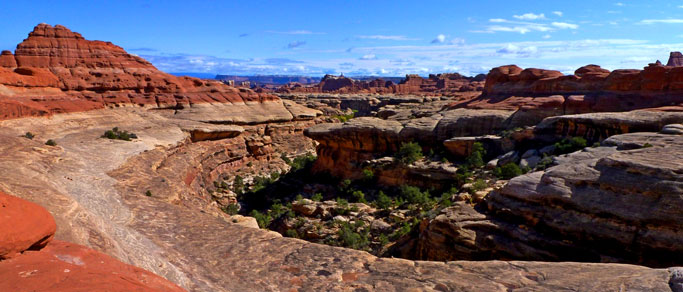
Further info
Here is the Needles webpage at AmericanSouthwest.net. And a general webpage about the larger area in Utah around this park. OutdoorsInUtah.com has general info about activities all around the state.
by Kevin Hartley, Alamo Group Outings leader
Climate Change
March brought unseasonal rain to Peru due to the warming of the Pacific off the western coast, between 7-9°F above normal. In the city of Piura, on the desertic northern coast, where the annual rainfall is only 3 inches, it rained that amount in 24 hours, and so far this year it has rained an astonishing 25 inches. Flooding and land/mud slides have affected almost the entire nation, leading to 100 deaths, over a million people affected (out of a population of 30 million) and 150,000 buildings damaged, including over 400 hospitals.
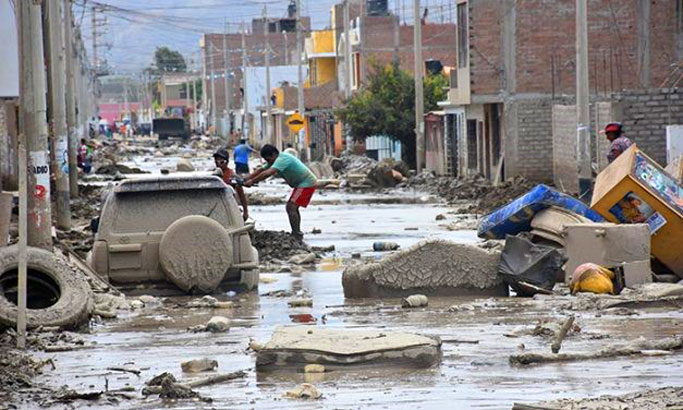
Producing less than 1% of the world’s total, Peru makes one of the smallest contributions to CO2 levels, but is among the nations most impacted by climate change. Increased earth temperatures have led to the reduction of its glaciers, the source of drinking water, agricultural irrigation and energy generation for much of the country. The warming of the oceans has led to significant impact from El Niño effects. Lima for example has registered notable temperature increases.
The water system for Lima is fed by surface sources and the turbidity from all the flooding knocked out the water supply for several days for this city of 10 million. As much of the fresh fruit and other agricultural products come from the Amazon area, they were unable to get to market as landslides destroyed the main highway and rail system connecting the coast to the jungle via the Andes.
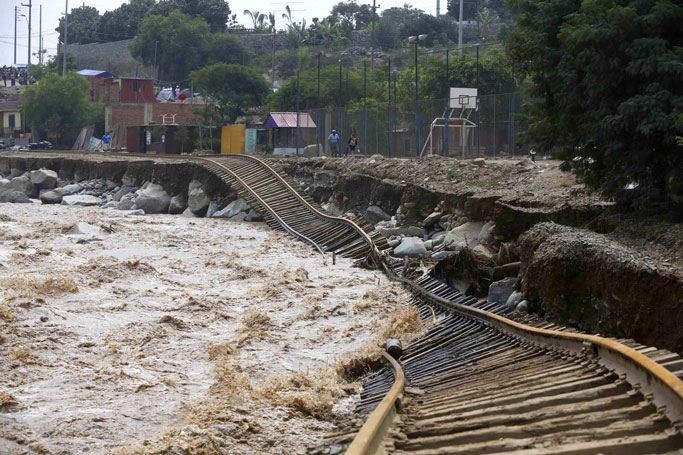
The effects have been economically devastating. The projected growth this year has been reduced from 3.8% to 3%, and the economy will not recover until 2018. The toll of climate change in this Andean country underscores the importance of international climate treaties and the work that Sierra Club is undertaking to reduce carbon generation.
by John B. Hertz, Green Buildings Leader, from Lima, Peru
Creating Water from Air
Imagine being able to produce water from air. According to Moses West, CEO/Partner of AWG Technology™, 2,200 gallons of pure drinking water can be produced a day using technology that he is advancing. The atmospheric water generation technology units he has built can “reproduce the natural phenomenon of condensation through an advanced technique of extracting humidity from the air by mechanical refrigeration.” The units are powered electrically and can be powered by renewable resources. View a recent SciTechNow program that featured AWG Technology and Mr. West.
Mr. West currently has an installation at Camp Mabry in Austin, and has run many tests for different applications. Applications of the concept are probably only limited by imagination. The technology is portable and therefore can be moved to solve needs for water. In an emergency, such as Katrina, the units could be brought in to supply clean drinking water. Units could be used for neighborhood distribution of water in a time of severe drought. Internationally, the units could be used to irrigate fields. Mr. West mentioned that the European Union may begin using atmospheric water generation by 2025.
Given water scarcity in a future of climate change, and as worldwide water will become more contaminated, this innovative technology could augment supplies of clean drinking water.Perhaps some innovative steps could be taken by the city, with support of the residents, where water management measures, in addition to atmospheric water generation, could be combined into one working program. Water management programs that might work together include the following:
- AWG Technology to produce water
- Bryan Hummel to capture water over contributing zone and recharge aquifer
- San Antonio River Authority's Low Impact Development to slow runoff
- Rainwater Harvesting
- Conservation
If these programs to produce, capture, manage,and conserve water all worked together, perhaps they would be more efficient and effective, and result in cost savings for the city and residents.
by Barbara McMillin, Transportation Leader and Speaker Program Chair

Outings: The Call of the Wild
Visit the Alamo Sierra Club Outings page on Meetup for detailed information about all of our upcoming Sierra Club Outings.

Bring Your Used Batteries to the General Meeting
Don’t throw those small batteries in the trash bin where they will end up in our landfills. Bring them to the monthly general meetings where we will have a container for you to place them in. Thanks to Gay Wright for coordinating this recycling effort.
The Alamo Sierran Newsletter
Richard Alles, Editor
Published by The Alamo Group of the Sierra Club, P.O. Box 6443, San Antonio, TX 78209, AlamoSierraClub.org.
The Alamo Group is one of 13 regional groups within the Lone Star Chapter of the Sierra Club.
Keep your email address current!
Send updates to Loyd Cortez, providing your name, address and membership number (if known).
Changed your mailing address?
Have you moved? Let us know by sending your old address, your new address and your member number (look on the upper left corner of your mailing label) to: address.changes@sierraclub.org.
Go online for the latest news and events
 |